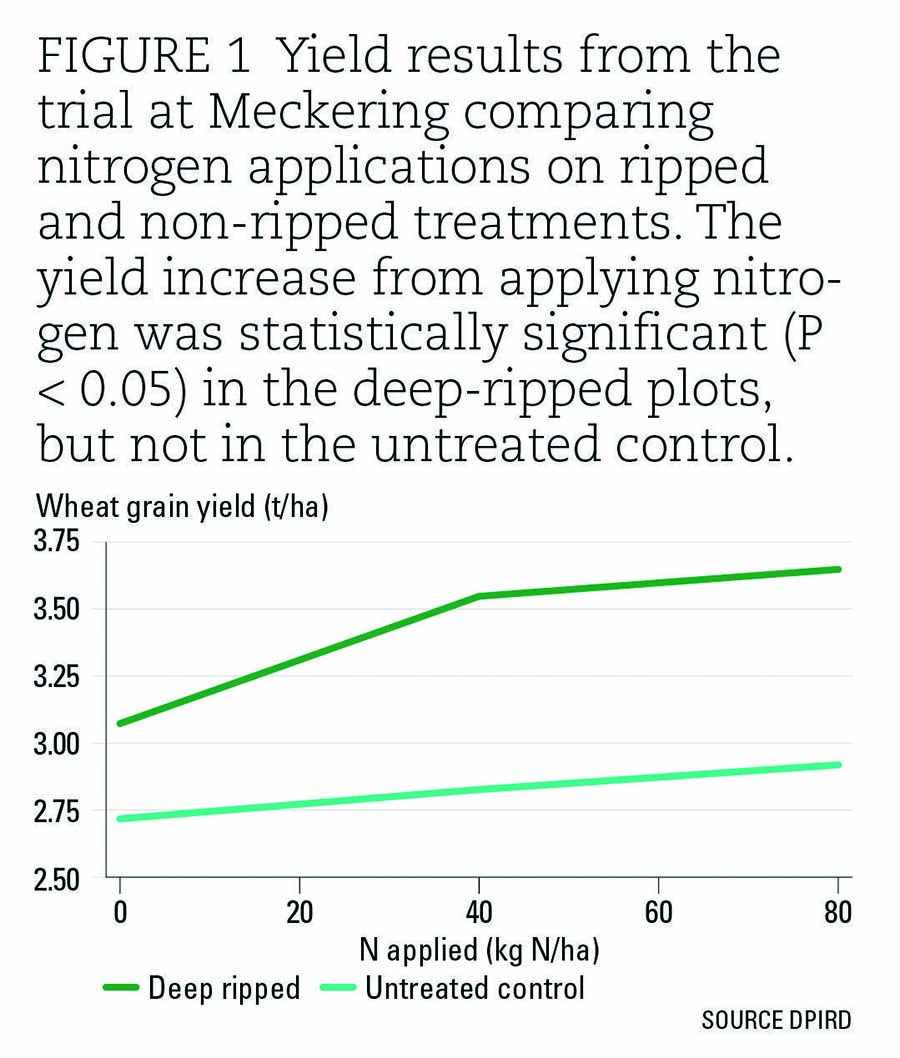The benefits of soil amelioration to alleviate compaction at depth, reduce herbicide resistance and overcome soil water repellence are now well-known, but what happens to nutrients in the soil after these aggressive tillage treatments?
A GRDC-invested research project, 'Nutrient re-distribution and availability in ameliorated and cultivated soils in the Western Region', is attempting to fill this knowledge gap and provide growers with more specific information on fertiliser requirements for crops planted into ameliorated soils.
Managed by the Department of Primary Industries and Regional Development (DPIRD), partnering with Curtin University, Murdoch University, the University of Western Australia, CSIRO and Map IQ, the project includes small plot field experiments, paddock-scale experiments and the monitoring of soil water and root growth.
Field experiment results
First-year results from a two-year field experiment in Meckering are already giving researchers a glimpse into how access to nutrients in soils changes after aggressive tillage treatments.
An untreated control was compared to a deep-ripped treatment in duplex sand over gravel soil, with nitrogen applied in the first year (2018) at rates of zero, 40 kilograms per hectare and 80kg/ha. Yield results from the wheat crop planted in 2018 showed there was a clear response to deep ripping and applied nitrogen.
Conversely, there was no yield response to the applied nitrogen in the untreated (non-ripped) control.
This year, further nitrogen applications of zero, 40, 80 and 120kg/ha were applied six weeks after sowing, providing some insight into whether the effect of deep ripping in response to nitrogen carries through to the second year.
DPIRD research officer Dr Craig Scanlan, who is managing the soil nutrition project, says given the widespread uptake of soil amelioration across the wheatbelt, growers require more accurate information on what happens to nutrient distribution in the soil, and nutrient availability to the crop, after all types of amelioration.
Greater nitrogen uptake
Dr Scanlan says these early results in Meckering suggest ameliorated soils allow for greater uptake of applied nitrogen by the plant, compared to compacted soils.
"In just one year we are seeing obvious results in terms of nutrient uptake when we compare ameliorated soils with compacted soils," Dr Scanlan says.
"The benefits of amelioration to alleviate soil constraints are now well-known, but what we are also seeing with the deep tillage treatments is greater value from our applied nitrogen - which translates into increased profit for growers," he says.
In another experiment on the same site, the value of the deep placement of nitrogen, phosphorus and potassium during the deep ripping process (pre-seeding) will be compared with the yield gains from the same nutrients applied to the soil surface at seeding time.
Results from this experiment will be available after this season's harvest.
In an experiment at Badgingarra, results have provided some valuable insights into how ameliorating soil water repellence affects nutrient supply over several years.

Figure 1: The results of the DPIRD’s two-year field experiment at Meckering, Western Australia.
Dr Scanlan says the experiment was investigating the carry-over yield benefit in the years after the phosphorus and potassium has been applied.
He says the research demonstrated potassium supply was the most important factor for grain yield over the five years.
In this experiment, results demonstrated a significant yield response to the rotary spading treatment, in three of the subsequent five years after the spading, with grain yield closely related to potassium concentration in the plants.
Dr Scanlan says the yield increase from rotary spading was mostly due to better access to soil potassium.
"As the years progressed, potassium was run down in all treatments and the relationship between soil potassium at zero to 10cm and grain yield was assessed," Dr Scanlan says.
"We found the relationship between Colwell K (soil potassium) and grain yield was similar to what we would expect based on previous work on minimum or no-till systems."
Guiding potassium decisions
What this means for growers, Dr Scanlan says, is that a few years after soil amelioration, potassium decisions can be guided by existing recommendation models.
Paddock-scale experiments are also an important part of the research in this project.
Researchers are planning to make use of the natural variation in soil type and yield response to fertilisers for ameliorated soils, by applying fertiliser treatments using variable-rate technology and measuring the response to fertiliser treatments from yield maps.
"We plan to identify areas of low and high response to fertiliser treatments using yield maps and target these areas with our soil sampling," Dr Scanlan says.
The results from the targeted soil sampling will be used to quantify which soil properties are influencing the yield response to fertiliser.
Four paddock-scale experiments were set up in 2018, at Cunderdin, Esperance, Meckering and Yuna. Another four are being established in 2019.
"2018 was an interesting year for these experiments because we only detected a yield response to potassium at one of the four sites," Dr Scanlan says.
Since yields were above-average at all the sites, he says, it was more than likely that good soil moisture conditions improved the availability of soil potassium, meaning that the additional potassium applied did not affect crop growth.
Dr Scanlan says the purpose of the research is to provide growers and advisers with clearer guidelines when applying fertiliser to crops on ameliorated soils. These guidelines will be available at the conclusion of the project in 2021.
More information: Dr Craig Scanlan, craig.scanlan@dpird.wa.gov.au

























































